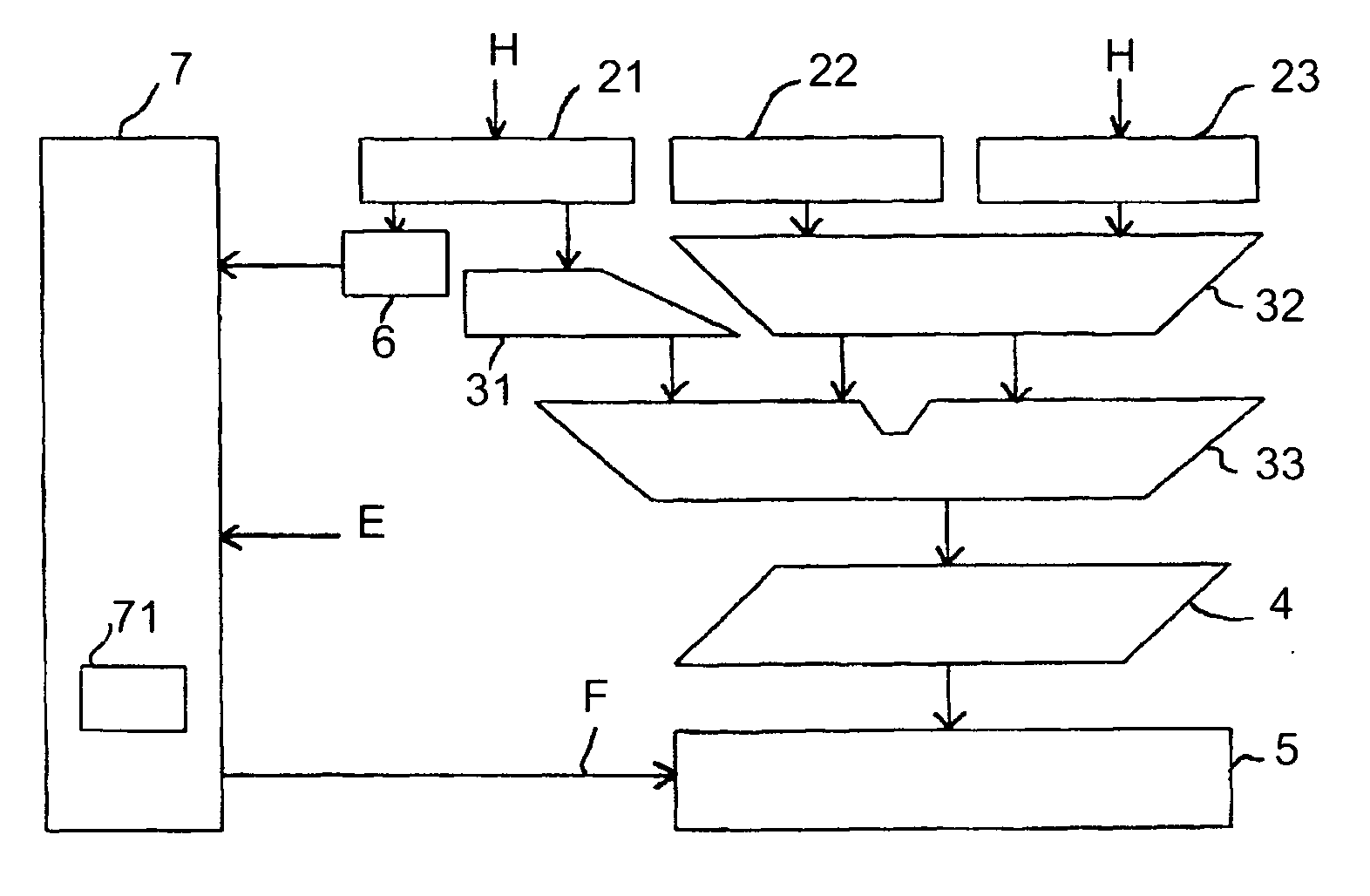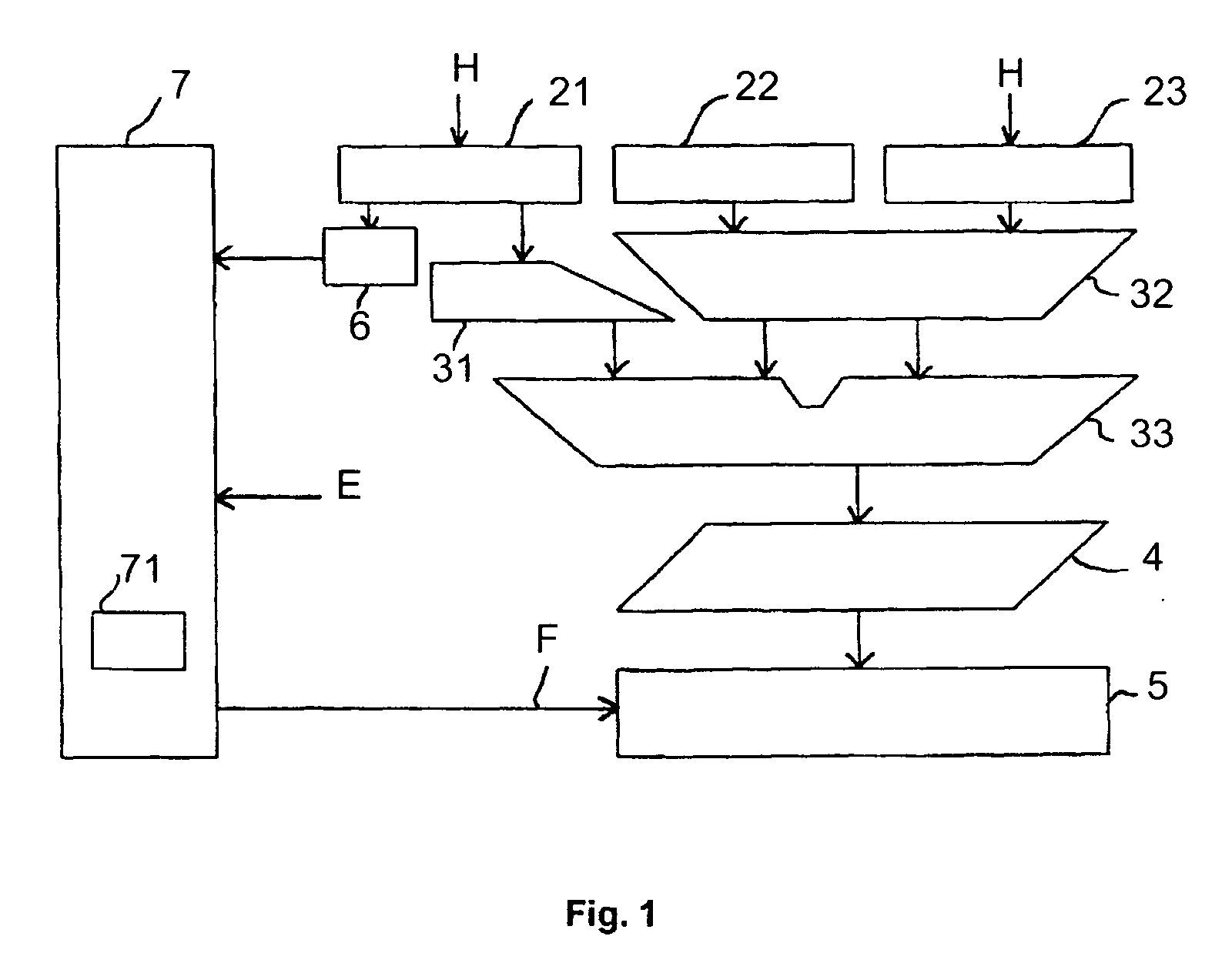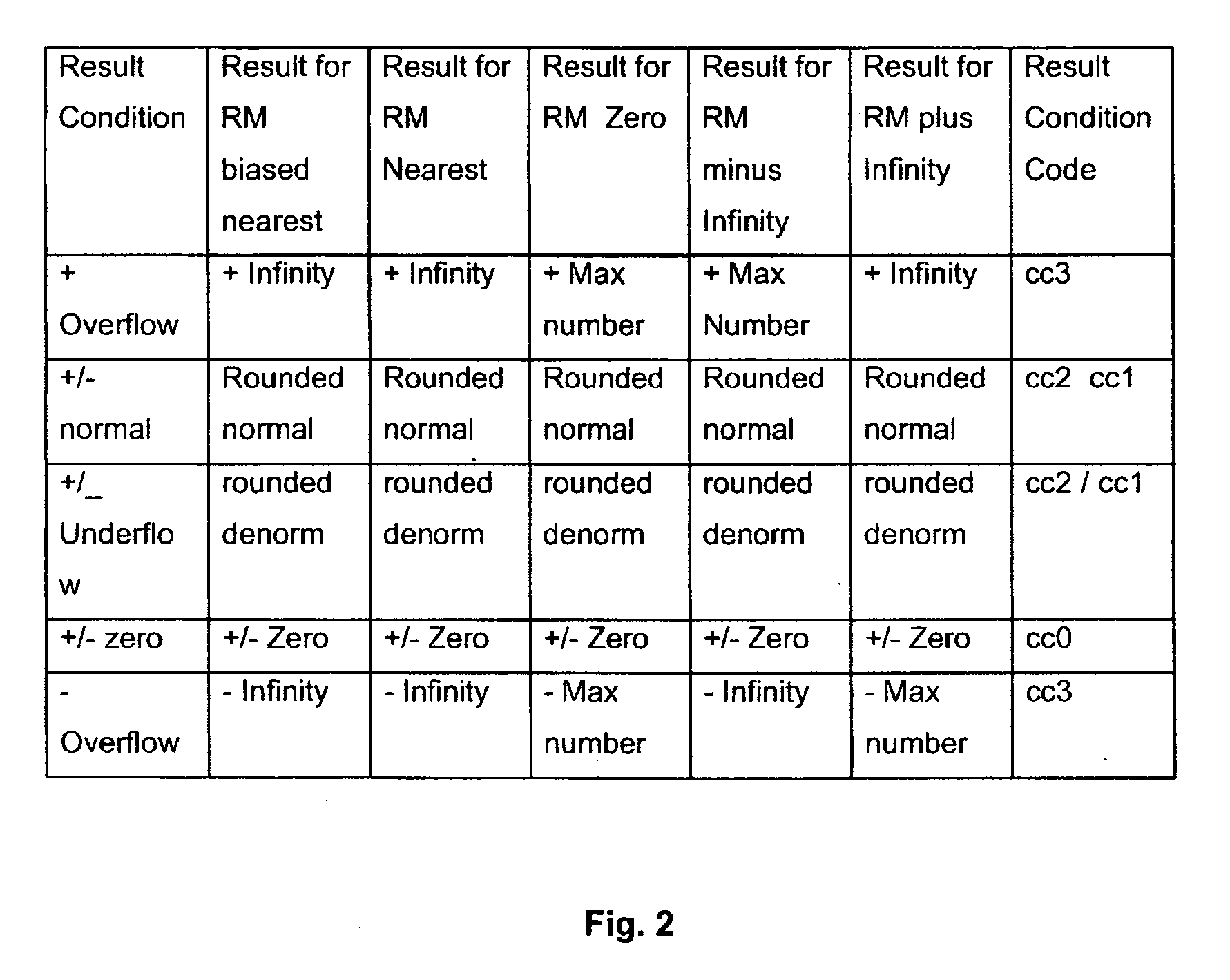Method and floating point unit to convert a hexadecimal floating point number to a binary floating point number
- Summary
- Abstract
- Description
- Claims
- Application Information
AI Technical Summary
Benefits of technology
Problems solved by technology
Method used
Image
Examples
Embodiment Construction
[0030]FIG. 1 depicts a scheme of a Floating Point Unit according to the invention that support fused multiply-add instructions compute A*C+B for three floating point numbers A, B, and C.
[0031] According to the Invention, the zero detection, overflow detection and underflow detection are done ahead with the leading-zero-count out of the C-Register of the FPU. For that, the operand has to be loaded additionally into the C-Register.
[0032] The Dataflow for the C-Register 21 includes a Leading Zero counting (LZC) 6 for the operand, which is already needed for other reasons in the C-Operand path. With the LZC and the input exponent, ‘Zero’, ‘Overflow’ as well as ‘Underflow’ can be detected early and in parallel to the transferring of the operand from the B-register 23, wherein the operand was also loaded, through the multiplier stage 32 and the main adder stage 33 of the FPU. In case of HFP denormal operands the LZC has to be subtracted from the Input exponent, to get the potential resu...
PUM
 Login to View More
Login to View More Abstract
Description
Claims
Application Information
 Login to View More
Login to View More - R&D
- Intellectual Property
- Life Sciences
- Materials
- Tech Scout
- Unparalleled Data Quality
- Higher Quality Content
- 60% Fewer Hallucinations
Browse by: Latest US Patents, China's latest patents, Technical Efficacy Thesaurus, Application Domain, Technology Topic, Popular Technical Reports.
© 2025 PatSnap. All rights reserved.Legal|Privacy policy|Modern Slavery Act Transparency Statement|Sitemap|About US| Contact US: help@patsnap.com



